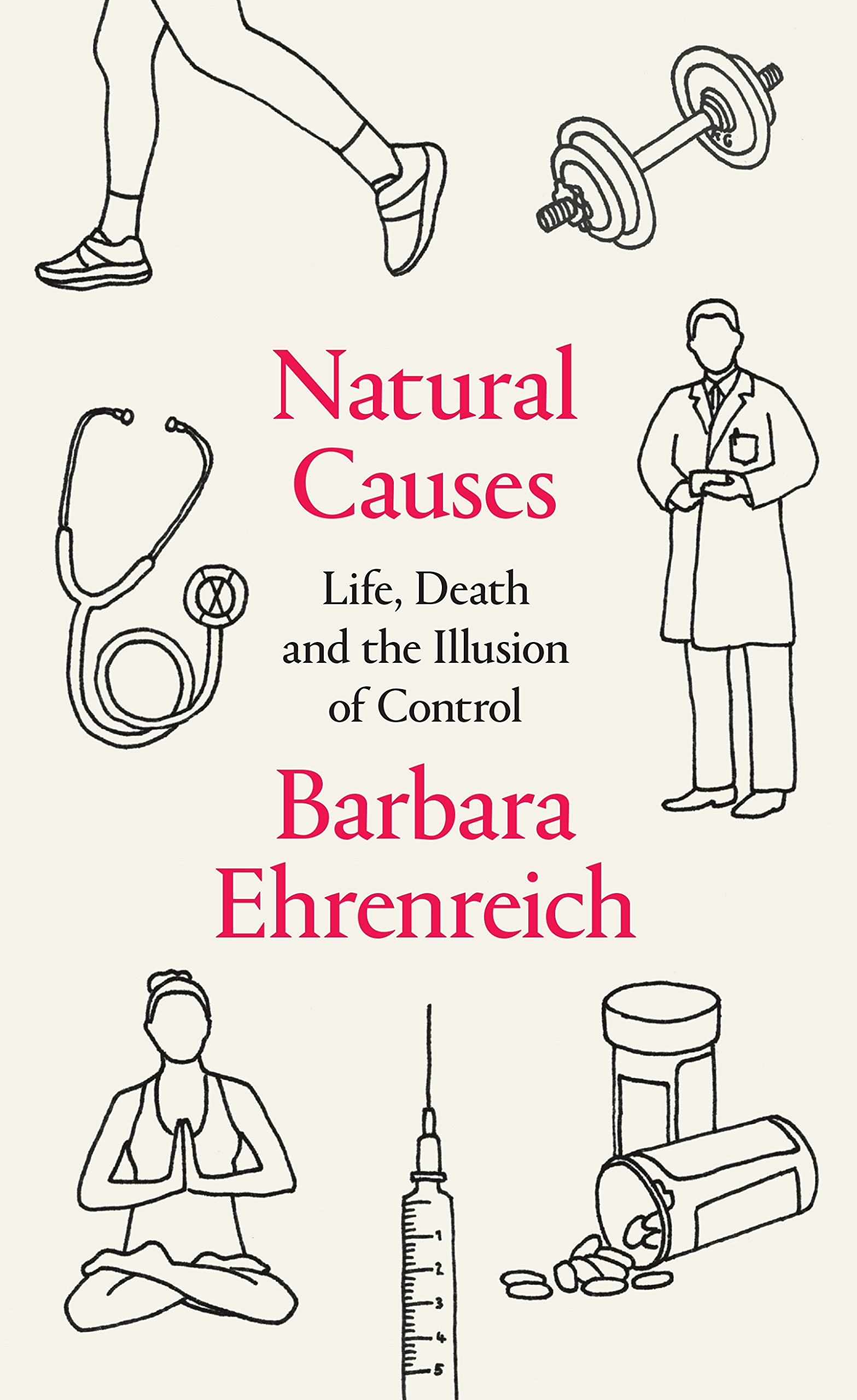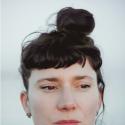“Wham bam, thank you, ma’am” might be one response to this polemical, wry, hilarious and affecting series of counterintuitive essays by one of the most original and unexpected thinkers around. Barbara Ehrenreich has described herself as a “myth-buster”, and her many books have challenged in an eminently readable fashion all kinds of assumptions that we automatically take for granted and never query, which may easily not only distort our attitudes but actually damage our behaviour. As this book’s subtitle, “Life, Death and the Illusion of Control” suggests, her subjects here are of the utmost importance: illness, health, disease, mortality, and our growing and potentially harmful illusions that we control the natural cycles of life – and death.
The symbols on the cover – syringe, jogger, yoga, doctor, stethoscope, bottle of pills, gym equipment – indicate some of her topics. One of Ehrenreich’s targets is the range of procedures for predicting medical problems, from mammograms to colonoscopies, which may cause more harm than help, or be more invasive than necessary. These screenings don’t statistically correlate to better treatment or rates of recovery, and over-diagnosis can be a hazard in itself.
 In a series of short chapters written in characteristically pithy prose, Ehrenreich takes on the medical profession, the wellness industry, the notion of the holistic, the notion of the self, attitudes towards mortality (and immortality), Silicon Valley, and the Western commercialisation and secularisation of meditative practices, not to mention variations of Buddhism-lite. She intertwines personal experiences – at the gym, visiting the doctor, her own years in academe – with a substantial bibliography ranging from scientific journals to journalism; this short book has some 21 pages of notes, a tenth of its total, offering lots for us to follow up if we wish.
In a series of short chapters written in characteristically pithy prose, Ehrenreich takes on the medical profession, the wellness industry, the notion of the holistic, the notion of the self, attitudes towards mortality (and immortality), Silicon Valley, and the Western commercialisation and secularisation of meditative practices, not to mention variations of Buddhism-lite. She intertwines personal experiences – at the gym, visiting the doctor, her own years in academe – with a substantial bibliography ranging from scientific journals to journalism; this short book has some 21 pages of notes, a tenth of its total, offering lots for us to follow up if we wish.
Ehrenreich is an iconoclast, her weapons a kind of calm common sense combined with an ironic sense of the absurd. She points out the ritualistic nature of modern medicine, where we voluntarily tell our most intimate feelings to strangers in white coats, before whom we are perfectly willing to strip and allow ourselves to be prodded and examined in a variety of ways, as though both doctors and patients are part of some recently discovered tribe. What is alien to the British reader is the author’s emphasis on pricing: the corporations practicing a kind of health fascism to get better productivity without any sign of cost benefit, and the sheer cost of American healthcare, is a subject alien to us who still have the benefits of the NHS.
She points out the latest research that shows our bodies, with their trillions of worker cells, do not always work in harmony. That means going right down to the level of cells and beyond, taking in macrophages, to which insufficient attention was once paid: they were the janitors and housekeepers of our physical selves, fighting infection and clearing up debris. (Who knew there was such a class system at work in the choices of subjects for scientific research?) And these supposed goodies, our little helpers, have since the turn of the century been revealed as often siding with the baddies, helping cancer cells to metastasise, for instance. Macrophages may be rowdy, boisterous and with minds of their own, and do not necessarily cooperate for the greater good. Although the trillions of microscopic creatures that make us up may not have consciousness, they evidently have agency. There is conflict as well as harmony in our bodies.
There is a graphic description of how we die, and what happens afterwards (those pesky macrophages evidently gain a brief new lease of life as they gorge on other organisms). The whole thrust of this uncannily stimulating series of observations is very personal: now in her late-seventies, Ehrenreich tells us that she is old enough to die. Natural Causes both stimulates her awareness of life and its ending, and embodies the easy conversation she conducts with readers on such awesome topics.
It concludes with a fundamental question: who is in charge; who or what controls bodies, minds, lives? Ehrenreich traces the evolution of the idea of the soul and the secular notion of the self and the individual, and of (as she puts it) solidarity within the collective, a concept promulgated during the French revolution. The self was an invention, as was the notion of society made up of masses of individuals, a concept that grew out of the ideas of the Enlightenment. Moreover interest in the self, entwined with the growth of capitalism, has taken on some of the attributes and vocabulary of religious belief: we are told to esteem ourselves, to love ourselves, even to worship ourselves. Self-belief may be replacing a belief in higher powers. Self-knowledge, self-love, and self-branding are features now of positive thinking, here described with a delicate cynicism.
Her conclusion about facing the end without being burdened by notions of the self is startling and somehow off the radar: it involves the controlled application of psychedelic drugs which suppress the notion of the self, allowing (according to the latest research) for a sense of oneness with the universe, and a falling away of fear and anxiety in the face of impending death. As for the author, she has glimpsed not a dying universe, but an animate one, seething with endless possibility; she only regrets that her future nothingness will prevent her witnessing what is happening in the world she will have left.
This is a book itself teeming with ideas and possibilities: maddening, stimulating, exciting and surprising, testifying in its own way to the expanding prospects of ideas that turn topsy-turvy, every-which-way as we try to make sense of the great unknowns.
- Natural Causes: Life, Death and the Illusion of Control by Barbara Ehrenreich (Granta, £16.99)
- Read more book reviews on theartsdesk















Add comment